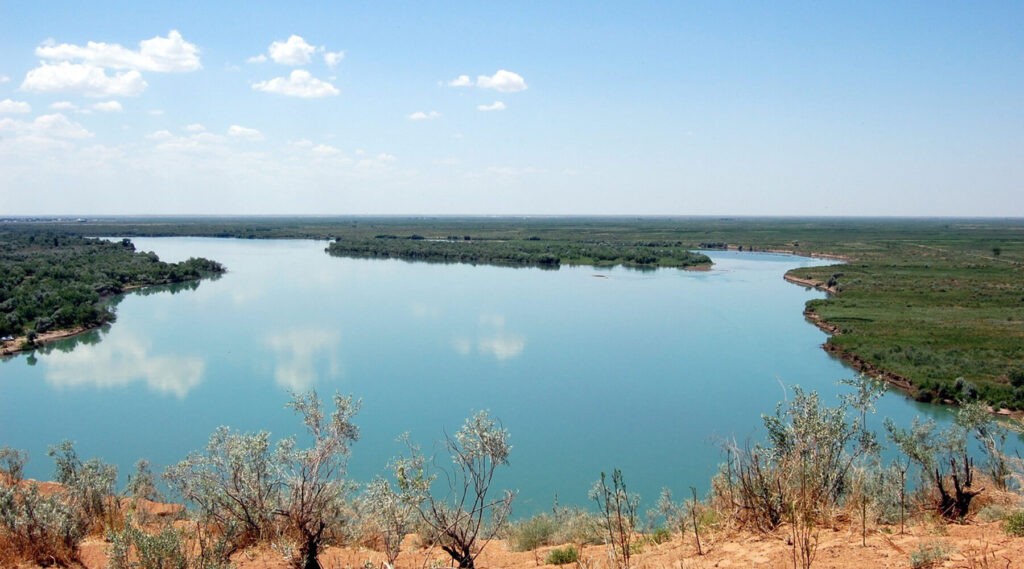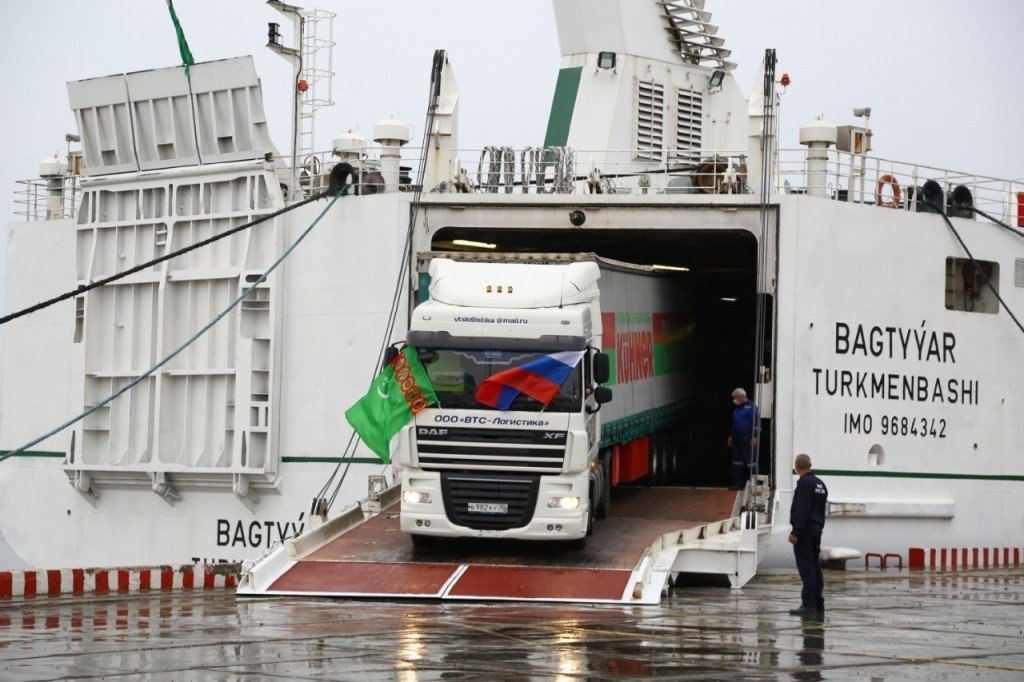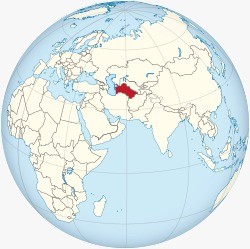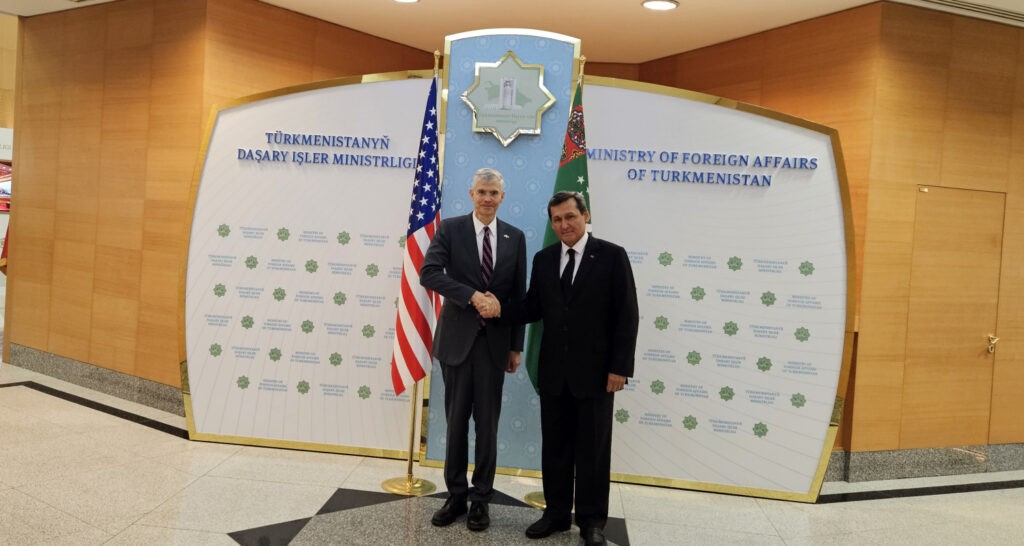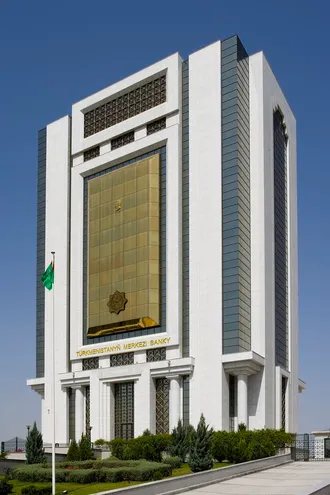Viewing results 1 - 6 of 47
Last week in Kazakhstan, delegates came together for the 87th meeting of the Interstate Commission for Water Coordination (ICWC) of Central Asia, where they discussed the potential and limitations of regional water reservoirs ahead of the 2023-2024 agricultural growing season. According to the ICWC, some of the more pressing questions focused on confirming limits of water usage for the 2024 growing season for the Syr Darya and Amu Darya river basins and the prognosis for water release from the reservoirs in those basins. There's still no information on how much water will be sent to the Aral Sea basin. In accordance with the quota, the draw on water from the Amu Darya watershed will be 56 billion cubic meters for the year, with about 40 billion cubic meters to be used in the April-to-October growing season. As stated in the ICWC agreement, Uzbekistan will receive 16 billion cubic meters, Turkmenistan 15.5 billion cubic meters, and Tajikistan will get 6.9 billion cubic meters. The Syr Darya's water use quota for this year's growing season is around 11.9 billion cubic meters, with 8.8 billion cubic meters going to Uzbekistan, 1.9 billion cubic meters for Tajikistan, 920 million cubic meters for Kazakhstan, and 270 million cubic meters for Kyrgyzstan. According to the ICWC, the totals for irrigated lands by Central Asian country are 4.3 million hectares in Uzbekistan, 2.5 million hectares in Kazakhstan, 1.9 million hectares in Turkmenistan, 1 million hectares in Kyrgyzstan, and 680,000 in Tajikistan.
Turkmenistan's Caspian Sea port of Turkmenbashi has started shipping cargo to the Russian port of Olya on the Turkmenistan-flagged ferry Bagtyyar, according to a report from the Turkmen Sea and River Routes (Turkmendeñizderýaýollary) Agency. The agency calls this voyage an important step towards the development of trade relations between Turkmenistan and Russia -- and an opportunity for the national merchant fleet to deliver perishable goods to their destination on time. The Bagtyyar, which according to Marine Optima was built in 2015 and has a summer deadweight tonnage (DWT) of just over 3,300 tons, is equipped with modern safety and navigation systems which guarantee cargo safety. Additionally, the Turkmen side says it's ready to open a shipping route for grain crops to be transited from the southern regions of Russia through the Caspian Sea to the countries of the Persian Gulf and other markets. At the port of Turkmenbashi, goods can be transshipped through the free zone without customs fees for up to three years. 2018 saw the opening of the port of Turkmenbashi, which increased access to markets throughout the Middle East and Europe. The project, worth $1.5 billion, was carried out by Gap Inşaat, a company based in Turkey. With the exception of oil products, the port can handle 17 million tons of different types of cargo annually. Four terminals (general cargo, container, bulk cargo and car ferries) are located on an area of more than 150 hectares.
On April 17, Turkmenistan President Serdar Berdimuhamedov attended the launch of a new section of the Ashgabat-Turkmenabat high-speed highway linking the cities of Tejen and Mary. Phased construction of one of the most ambitious transport projects in Turkmenistan began in January 2019. Covering 600 kilometres, it comprises three sections - Ashgabat-Tejen (203 kilometres), Tejen-Mary (109 kilometres), and Mary-Turkmenabat (288 kilometres) – and once completed, will provide a faster and more economical means of transporting goods across the country. Hailing the high-speed Ashgabat-Turkmenabat highway a modern revival of the ancient Silk Road, President Berdimuhamedov reiterated his country’s commitment to the development of transport corridors from East-West and North-South and stated: “Turkmenistan is located at the junction of two continents, and such a favourable location provides a huge advantage in the formation of an international transport and logistics corridor, the integration of the domestic transport sector into the global system and the expansion of trade, economic, cultural and humanitarian ties with partner countries.”
In her report on the International Monetary Fund (IMF) mission to Turkmenistan, from 27 March – 9 April, Ms. Anna Bordon announced that Turkmenistan’s economy is set to expand by around at 2.3% in the coming year. According to the IMF mission’s assessment of the economic outlook and risks of Turkmenistan’s macroeconomic and financial developments, the country’s economic activity moderated in 2023 and inflation is on the rise. IMF staff estimate that post-pandemic growth surged to 5.3% in 2022 before falling to 2% in early 2023 as world commodity prices subsided, monetary policy tightened, and pressures on exchange rates abated. A temporary situation, inflation began to pick up later in 2023 and is projected to gradually rise to 8% mainly due to the country’s policy to increase public sector wages and pensions by 10% per year. “To improve spending efficiency, Turkmenistan should enhance its targeting of social spending, move toward public wage increases based on performance, and enhance public investment management,” said Ms Borden. The IMF estimates that growth of hydrocarbon production will stabilize at around 2%. In contrast, non-hydrocarbon growth is expected to remain subdued, given the challenging geopolitical and business environment, investment inefficiencies, the significant overvaluation of real exchange rates, and burdensome standards imposed by international regulations. The end of mission statement concluded: “The authorities are adequately focused on economic diversification. A more market-based economic diversification strategy would be preferable. Sustained macroeconomic stability is a pre-requisite for diversification, which importantly requires adjusting the exchange rate and eliminating exchange restrictions.” It was also recommended that Turkmenistan “gradually phase out administrative controls and reduce the footprint of the state in the economy”.
On 14 April, delegations led by Rashid Meredov, Minister of Foreign Affairs of Turkmenistan and John Pommersheim, US Deputy Assistant Secretary of State for South and Central Asian Affairs, attended an annual political consultation in Ashgabat. The meeting focused on the current state and prospects for the development of Turkmen-American relations in political, trade, economic, ecology, culture, education, and humanitarian sectors. According to the Turkmen Foreign Ministry, both parties confirmed their commitment to cultural and educational programs, through monthly meetings, and approved a joint road map in the field of education. The American delegation welcomed Turkmenistan's accession to the Global Methane Commitment which underlines both countries’ determination to resolve environmental problems and create sustainable socio-economic development. The parties welcomed the establishment of inter-parliamentary cooperation as essential for maintaining contacts and coordinated approaches to resolving pressing issues.
According to news portal Turkmen.news, clients of a number of banks in Turkmenistan are inexplicably losing money from their accounts due to technical problems. On April 8-9, Dayhanbank customers discovered deficits of several hundred manat in their accounts. The amounts ranged from about 150 ($88.24) to 800 manat ($470.59). and in some cases their accounts were left in the red. When customers complained to the bank, they said it was a technical glitch and everything would be back to normal by the evening. In most cases, the amounts withdrawn was refunded to the customer’s account later that same day. According to the report, only by obtaining a bank statement and carefully checking all expenses would one be able to identify the discrepancy.


